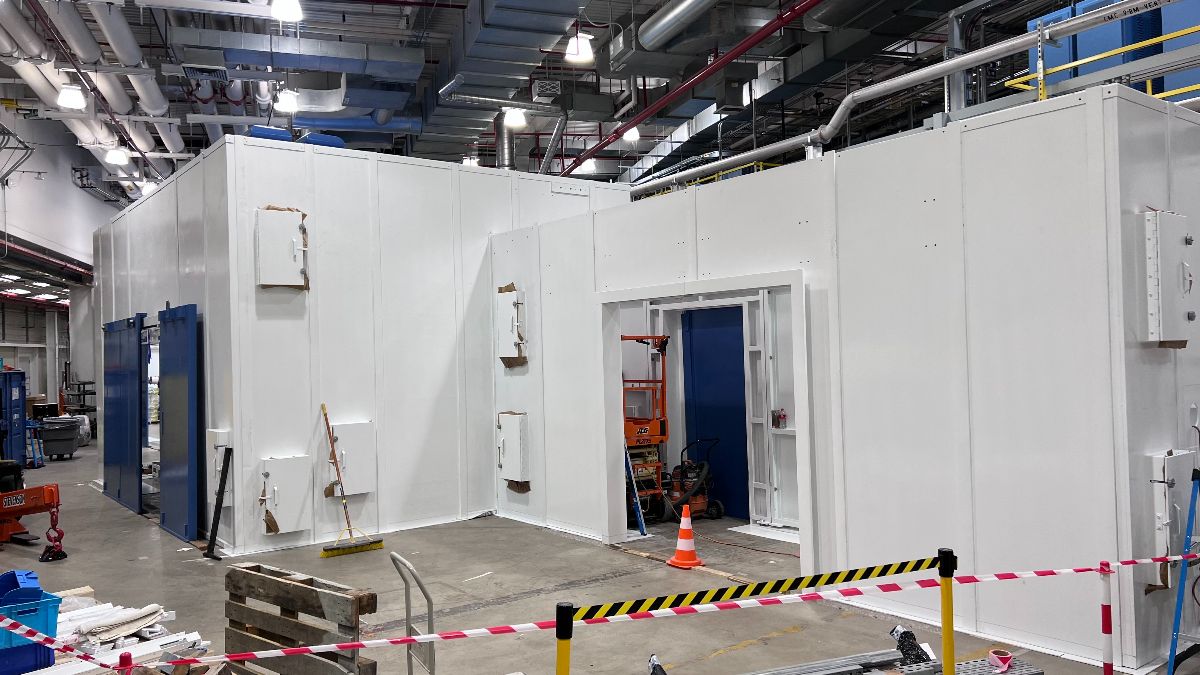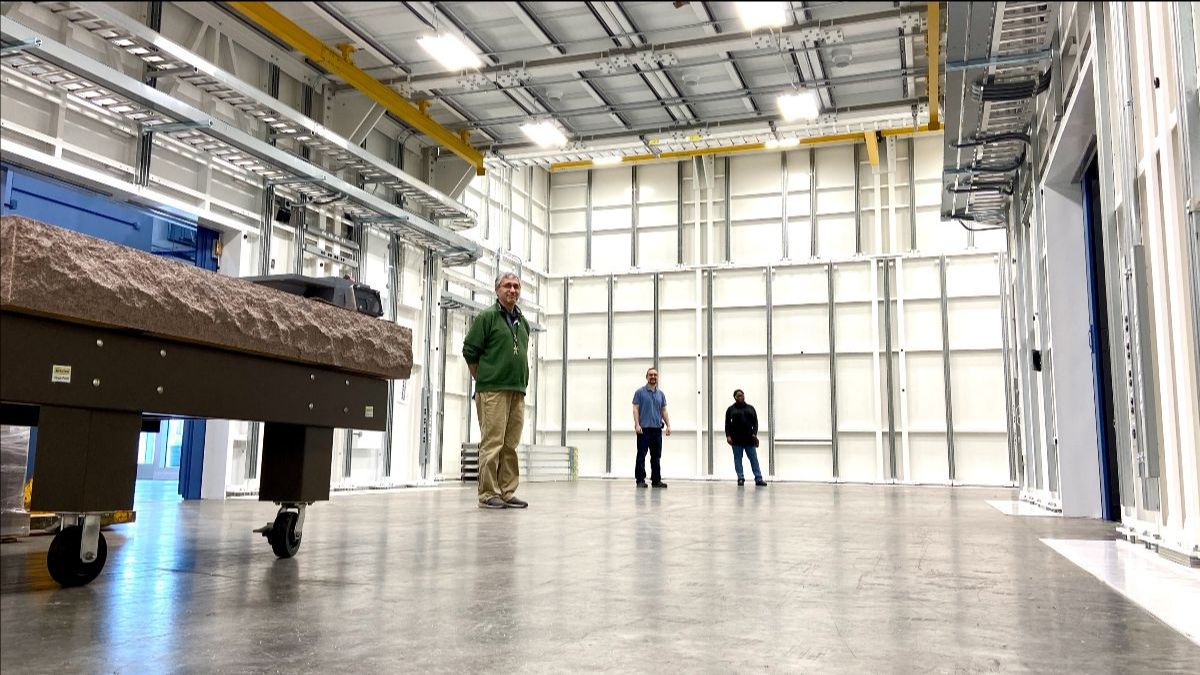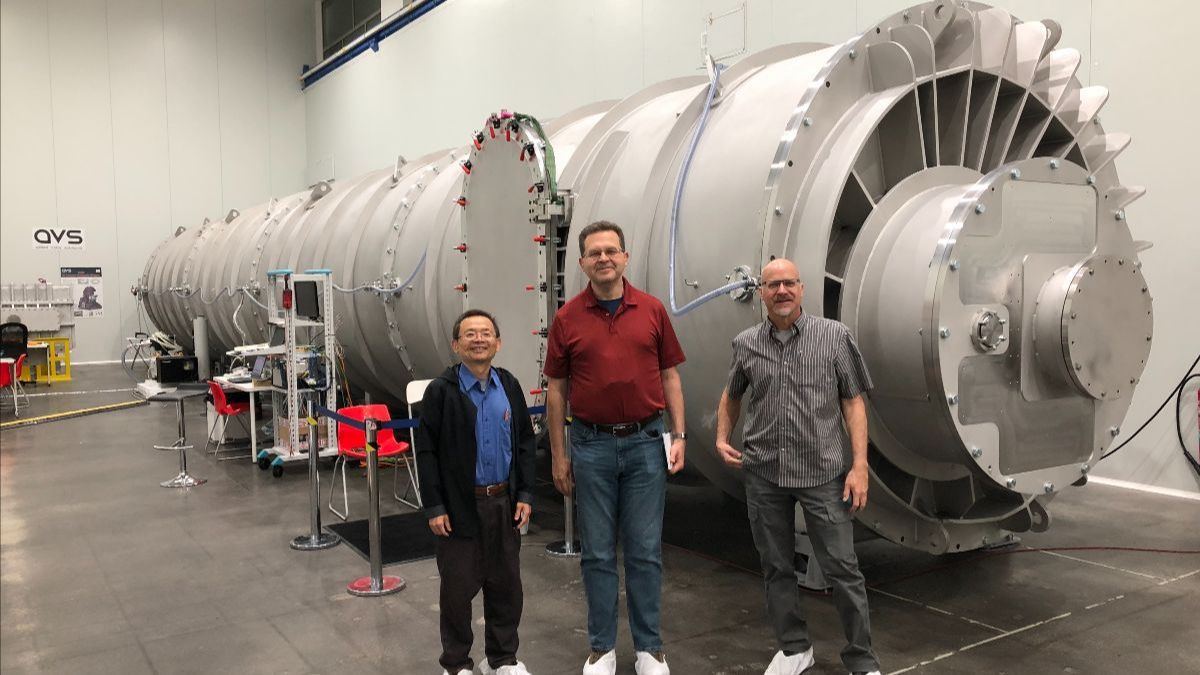
Shielded enclosures for the X-ray Photon Correlation Spectroscopy (XPCS) beamlines at 8-ID-E, left, and 8-ID-D.
Last month, the final girder of the original Advanced Photon Source (APS) storage ring was removed from the facility. Soon crews will start moving in the first modules of the new storage ring for installation. While we have a breather on the accelerator front, I wanted to get you up to speed on what’s happening with the beamlines.
The APS Upgrade Project includes the construction of seven feature beamlines, the installation of infrastructure to enable two more feature beamlines down the road, and significant upgrades to many of our existing experiment stations. Work is progressing nicely on these projects, and the experiment floor of the APS is a bustling hub of activity.
The most important thing to note is that everyone has been working cooperatively and safely to build out these beamlines. Much of this work is being led by Robert Winarski, the beamline installation coordinator, and his team. You can read more about Robert in this just-published People of the APS Upgrade profile. While you’re reading profiles, this recent one on floor coordinator Ashley Wayman, one of the liaisons between the beamline staff and the rest of the APS, is also well worth your time.

Argonne scientists Ali Mashayekhi, Peter Kenesei and Leighanne Gallington, from left, stand inside the newly constructed experiment enclosure for the High-Energy X-ray Microscope (HEXM).
While construction of beamlines is occurring, a series of first experiments workshops has begun, to start discussions about the capabilities of the new beamlines and the early science that can be accomplished with them. The first of these, for the POLAR beamline at 4-ID, was held on June 28, and future workshops are planned for the X-ray Photon Correlation Spectroscopy (XPCS) beamline at 8-ID, the Coherent Surface Scattering Imaging (CSSI) beamline at 9-ID and the In Situ Nanoprobe (ISN) and PtychoProbe beamlines at 19-ID and 33-ID, respectively.
Just to give an idea of the ongoing work, our Long Beamline Building is looking a lot more full than it did a few months ago. The mammoth enclosure for the High-Energy X-ray Microscope (HEXM) is nearly finished, and completion of the enclosure for ISN is well along. On the experiment floor, work is nearing completion on two other enclosures, for XPCS at 8-ID and CSSI at 9-ID.

The massive Grand Tube enclosure for the Coherent Surface Scattering Imaging (CSSI) beamline, with Argonne scientists (from left) Jin Wang, Joseph Strzalka and Raymond Ziegler.
For CSSI, we’re expecting to take delivery of what we’re calling the Grand Tube, a 20-meter-long tube that is three meters in diameter, in August. (Check out the photo!) The Grand Tube is another enclosure, this one under vacuum, helping to enable CSSI’s nanometer-level resolution in 3D. This is one of the largest components we have on order, but the list of deliveries winging their way to the APS is impressively long.
A new mirror optics system has been installed at the National Institute of General Medical Sciences and National Cancer Institute Structural Biology Facility (GM/CA) at 23-ID. Components are being removed in preparation for construction at the Atomic and 3D Micro- and Nano-Diffraction (3DMN) beamlines at 33-ID and 34-ID, respectively. We’re removing utilities at various beamlines in preparation for future work, and front-end systems have been removed all around the ring to get ready for the new front ends.
Lastly, a comment on the Insertion Devices being prepared for the new ID beamlines. That work is off to a great start -- all the APS insertion devices were removed from the ring ahead of schedule and moved to temporary storage. They are now being retrofitted with new magnetic arrays and control systems before being checked out and made ready for reinstallation.
As we move closer to the end of the shutdown, all beamline staff, CATs included, will need to follow the multi-step process for bringing beamlines back online, as outlined on this web page. There are supplementary documents and contacts at each step to help guide each beamline toward starting up and conducting science at the upgraded APS.
We’ll keep you informed as all of this moves forward. Next time we’ll have news about the start of the new storage ring’s installation, so keep an eye out for that. As always, the APS Upgrade website will have the latest information about the project. Thanks for reading and please -- stay safe.
Until next time,
Jim Kerby
